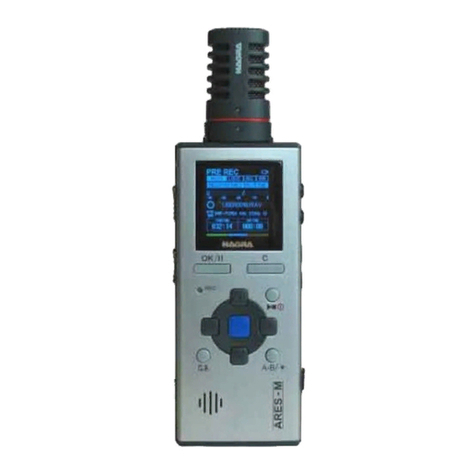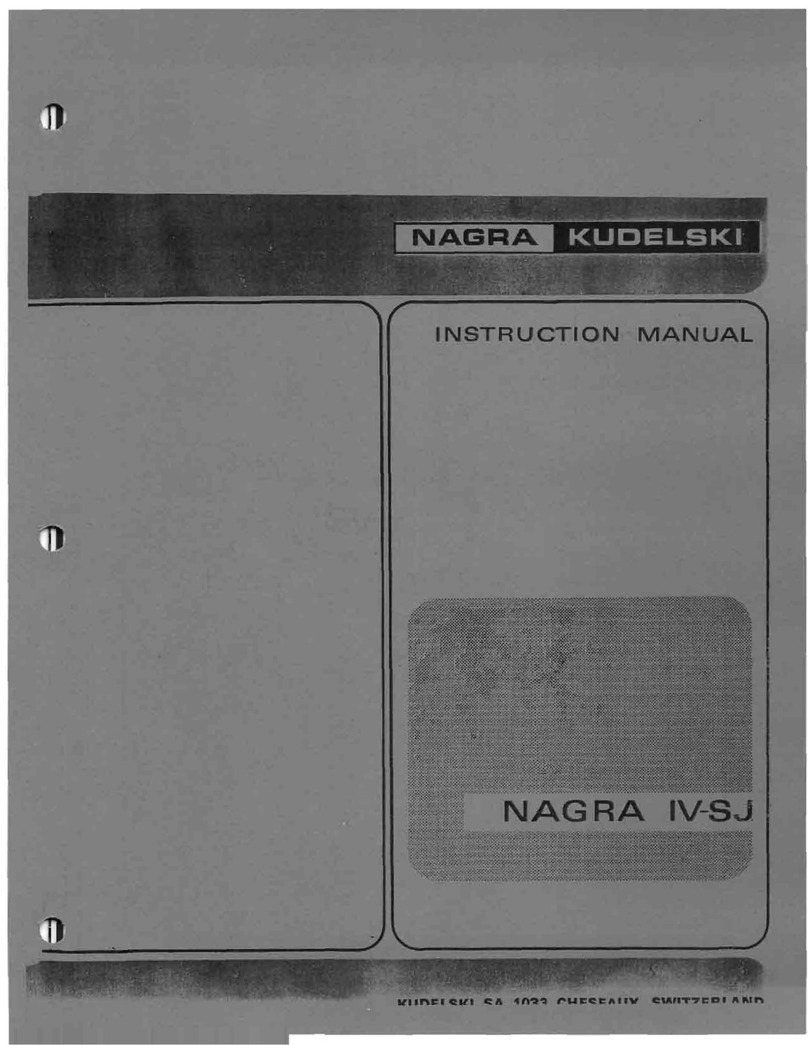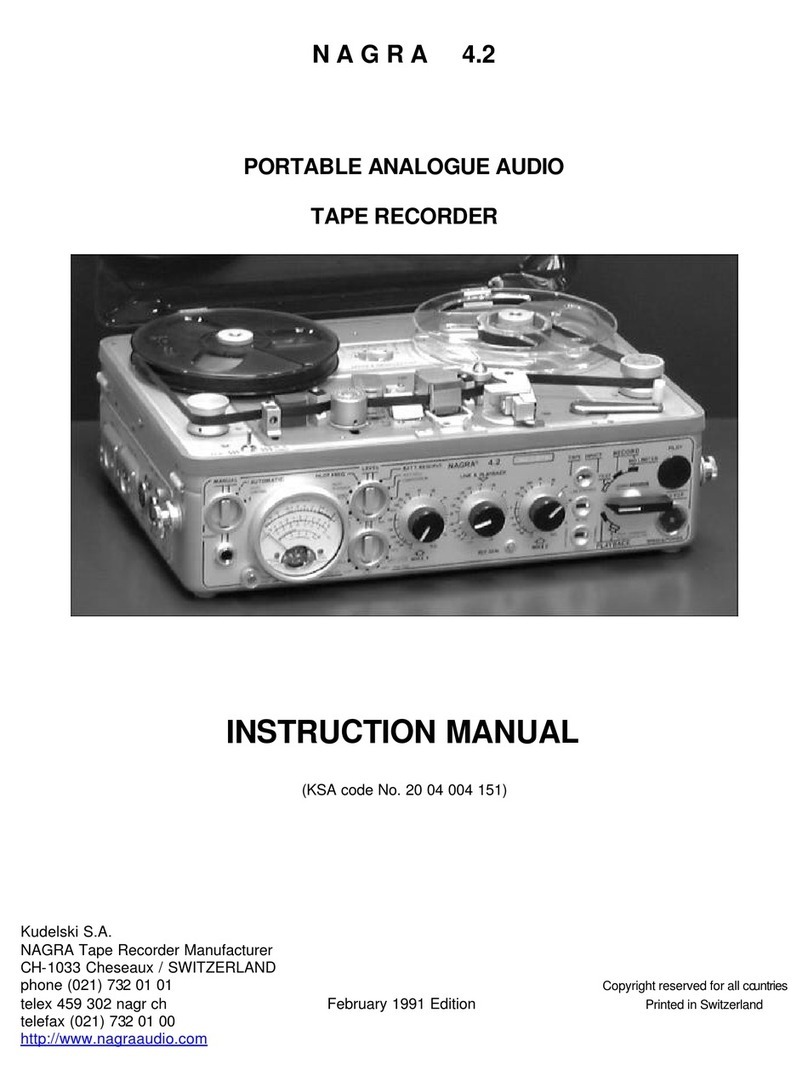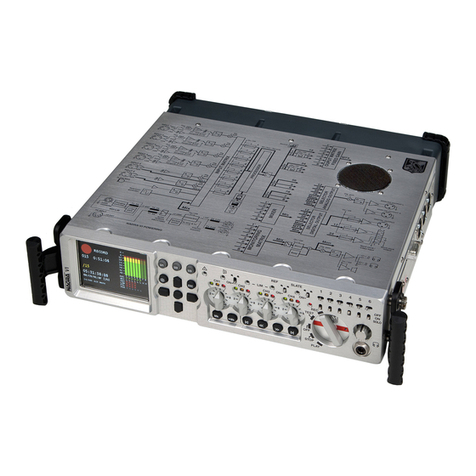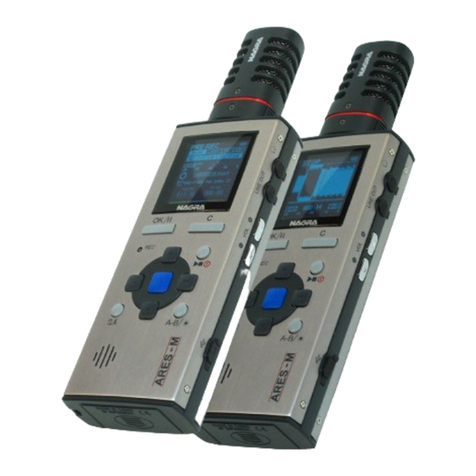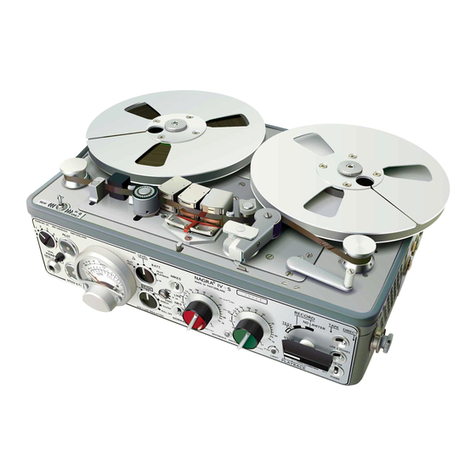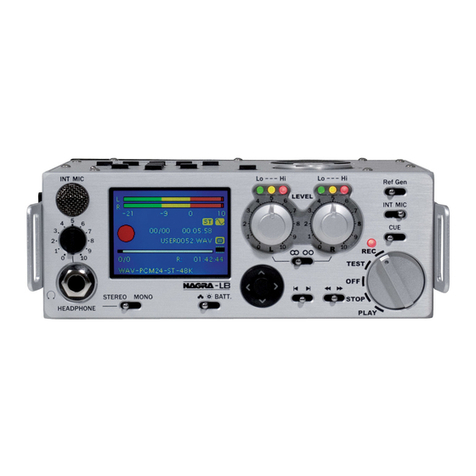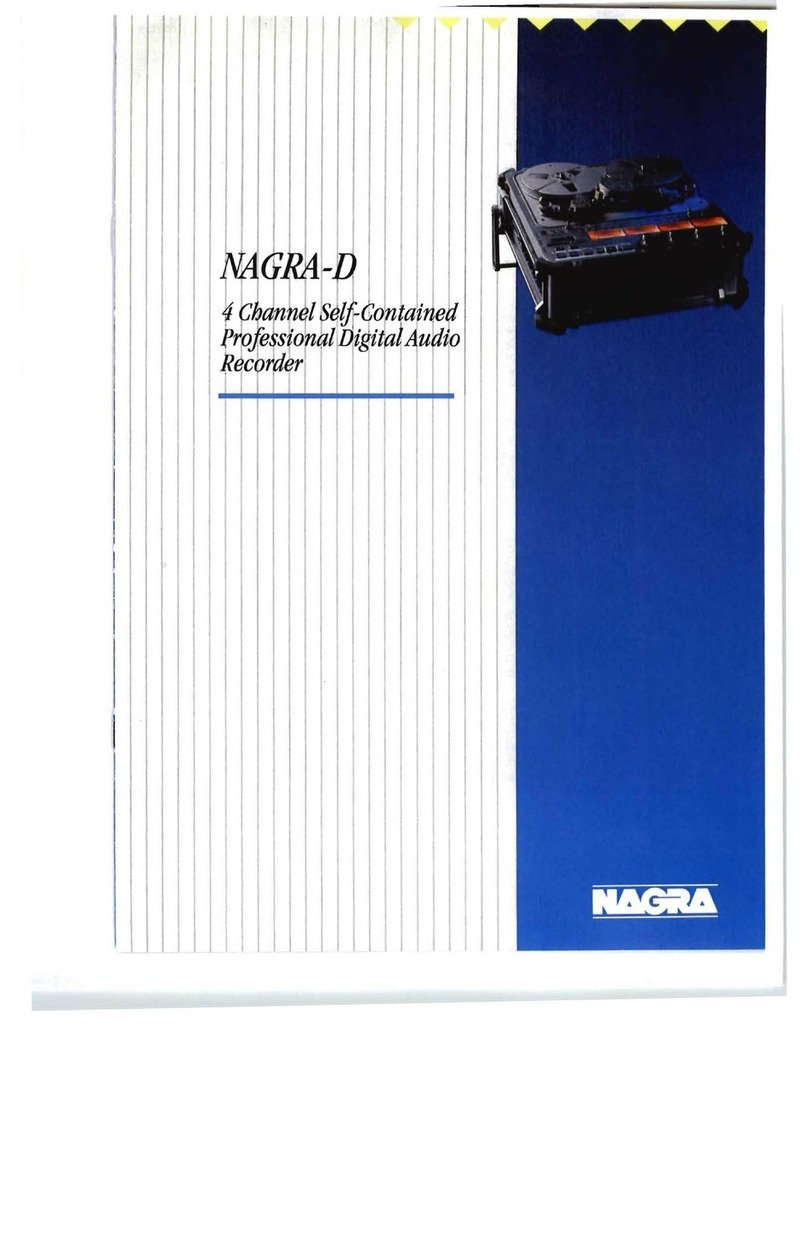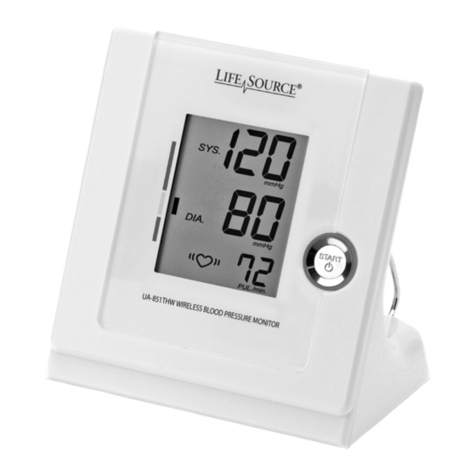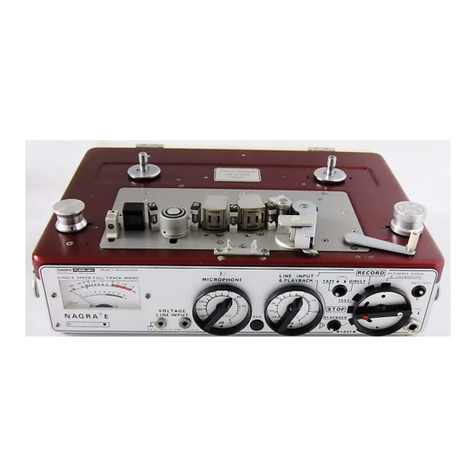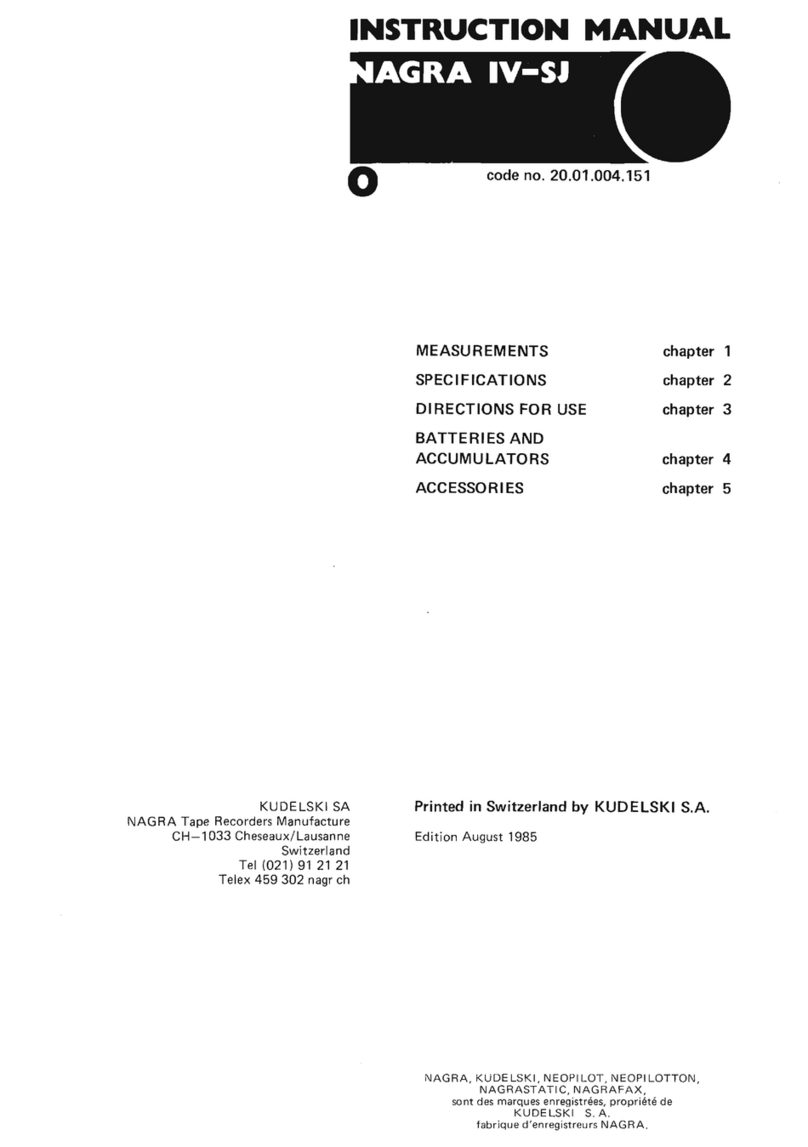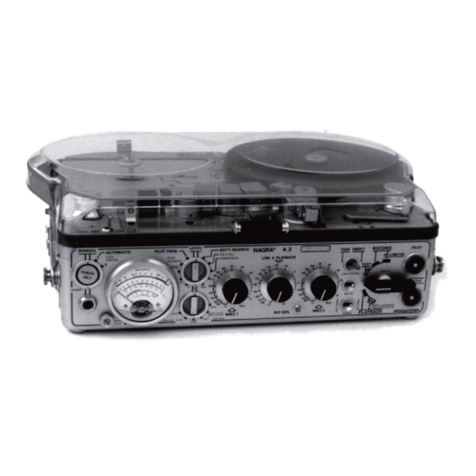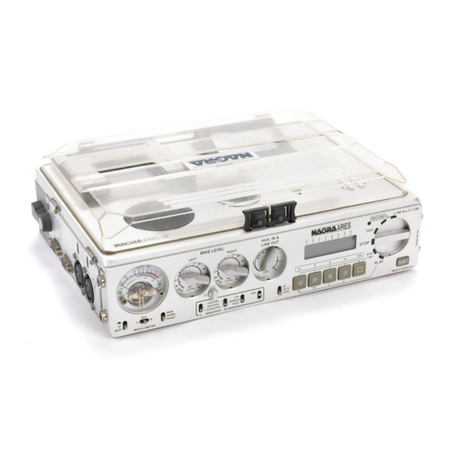INTRODUCTION
USING THIS
MANUAL
This instruction manual is designed to enable the operator to understand, and use the NAGRA-D.
The basic principles
of
audio recording or digital technology are not covered, except where the
concept within the
NAGRA-D
is different from that normally app'lied. The manual is broken down into
chapters covering different aspects of the machine. At the end
of
the manual there is a
comprehensive index, which should guide the operator to the correct page quickly. The pages are
numbered from 1 to N for each chapter.
If
in
the future there is a page to be added in the middle
of
a
chapter, then the new page to
be
added will have a page number followed by a decimal point and
then
1,
2 or 3 etc. For example
if
a page is to
be
added between pages 5 and 6
of
a particular
chapter then the new page will be numbered 5.1. This manual covering Version 2.X software for the
NAGRA-D replaces all previous editions.
GENERAL
DESCRIPTION
The concept
of
the NAGRA-D was to build a truly professional machine based
on
a
format
that is
reliable and lends itself well to archiving. The arguments regarding the format, choice
of
tape etc. are
not covered here.
The NAGRA-D is a
four
channel digital audio recorder having 24 bits per sample recording
on
6.35mm metal oxide tape. It accommodates the sampling frequencies
of
32 kHz, 44.1 kHz and 48
kHz (with the on-board AID converters) rendering it suitable for all types
of
professional recording
applications. The NAGRA-D is transparent to the AES bus giving connection possibilities to a wide
range
of
external digital equipment, which even give it the possibility
of
recording at sampling
106
frequencies
of
64, 88.2 and 96 kHz. The format of the NAGRA-D records 4.608 x bits per
second, meaning that on a 5" reel
of
tape contains 16.03 x 109 bits (16 giga bits)
of
data. The
combination
of
selected tape speed and number of channels to be recorded gives tape durations to
satisfy all applications.
TAPE
DURATIONS
48
kHz
44.1
kHz
32
kHz
5" reel 4 channel mode 1 hr. 1
hr.
05 mins. 1 hr 30 mins.
2 channel mode 2 hrs. 2 hrs. 10 mins. 3 hrs.
7" reel 4 channel mode 2 hrs. 2 hrs. 10 mins. 3 hrs.
2 channel mode 4 hrs. 4 hrs. 20 mins. 6 hrs.
Apart from the two AES digital inputs, four analog inputs are available for either line
or
microphone
input sources.
When
in microphone operation each of the four inputs is switchable between Dynamic,
"T" powering,
+12V
phantom and +48V phantom. The Signal levels are adjusted using the input
sensitivity potentiometers, and the levels are indicated
on
the four microprocessor controlled meters.
The four head scanner
(2
for recording and 2 for playback) allows read after write (off tape
monitoring) which can be heard through the two, level adjustable, headphone outputs.
The three longitudinal tracks (Control, CUE
and
Time Code) give flexibility
of
operation and
additional features
never
before seen
in
a professional recorder.
Microprocessor control
of
the entire machine gives almost limitless possibilities, not only as far as the
digital recording is concerned, but also for external control, fault diagnosis, tape directory
management etc., from a PC equipped with the NADCOM software (KSA # 10514)
Chapter 1

